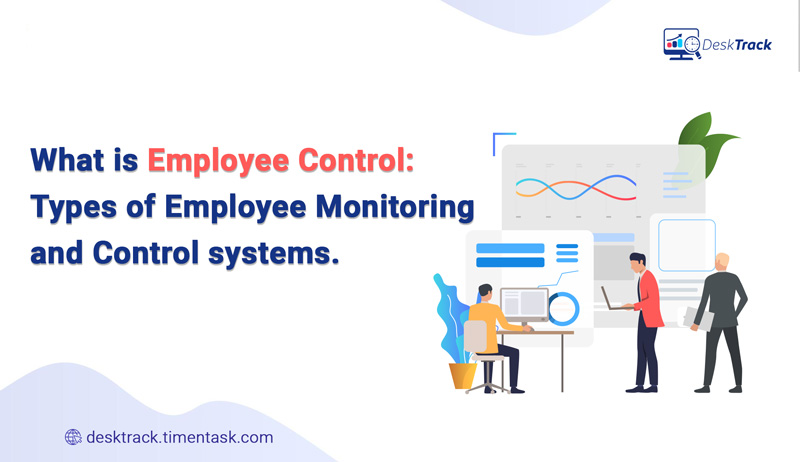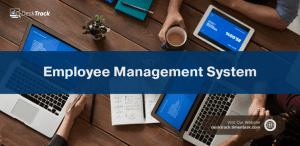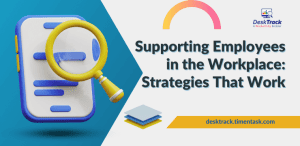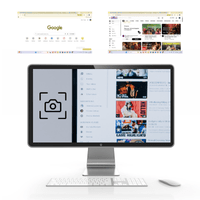The biggest challenge any organization faces in the corporate world is to monitor and evaluate the staff output, presence, and software usage because it is getting difficult to control the staff. That’s why many organizations find deploying Employee Control software to be extremely helpful no matter if you have office-based, hybrid or remote staff.
But before we proceed let us first understand what is
employee control and why it is necessary.
What is Employee Control?
In layman terms, employee control means tracking the action of the employees during working hours and monitoring their activities such as usage of software, phone, and the internet. With the help of employee monitoring Systems, the management finds it easy to track, evaluate, and enhance the performance of the employees. This might include websites they visit or apps they use, and how much time the employee spends on those websites or apps.
Employee Control is highly beneficial for the organization in a number of ways including an increase in the productivity of the employees, presentation, and productivity, and information sharing.
Types of Employee Control Systems
There are various Employee Monitoring Systems and Control Systems via which organizations can
control the performance of employees. The systems are as follows:
1. Output Control
It is one of the leading Employee Monitoring and Control Systems. The main goal of output control is to evaluate an employee’s performance based on quantifiable outcomes. A company’s objectives and output control systems are particular to that company.
In a vertically structured organization, the top managers are in charge of establishing output control systems based on business objectives and the contributions of the employees to accomplishing those objectives.
The Key performance indicators (KPI) assessment method, which is used to track employee performance over a specified time period, is an example of an output control system.
KPIs are a group of measurable metrics used to evaluate the short- or long-term performance of an employee. KPIs can be used by managers to assess the productivity of an individual worker, a team, a department, or an executive at any level of the organization and is the leading methods of Staff control.
KPI examples include:
- Count of Signups
- Growth in Revenue from Renewals as a Percent
- Time on Average for Support Resolution
- These KPIs are quantifiable and pertinent to a company’s overarching objectives, such as boosting growth and retaining present clients.
Each statistic tracked by an output control system needs to be pertinent to the worker’s position within the company in order to produce the greatest results. By doing this, companies can control their output more effectively and set realistic goals for the upcoming quarter.
In other words, it would be useless to evaluate the productivity of your marketing staff based on how many bugs in the code are fixed each day or how many customer support tickets are addressed each hour.
2. Behavioral Control
Behavioral control, as its name suggests, is a subtype of employee control system that focuses on reining in employees’ activities when they achieve desired objectives. This differs significantly from the output control approach’s results-driven orientation.
A company can set up measures to regulate employee behavior under the behavioral control approach in order to get the desired outcome. There are various behavioral control tools such as web filter software, company policies, etc.
3. Clan Control
In order to motivate a good employee to put up their best effort, the clan control employee control method places a strong emphasis on fostering a culture, shared tradition, norms, expectations, and values. Effective personnel management and engagement are crucial to this system’s success.
Clan control, when properly implemented, gives staff members the freedom to use their imagination to develop amazing goods and concepts that will accelerate business growth.
Types of Employee Monitoring Methods
Managers may better manage employee turnover, acquire more insight into employee work habits, and protect their company from insider threats when they integrate employee management and control systems.
With the use of remote employee management and control software, many organizations will keep an eye on their employee’s productivity. These technologies’ comprehensive reports enable managers and HR specialists to check that their staff members are following their instructions.
With features for data collecting like: employee monitoring solutions give employers additional visibility and control over remote labor.
-
- Screenshots of the precise contents of each worker’s screen
- The several websites that are accessed during the working day
- The duration of workdays for employees
- Time spent on tasks versus personal activities is a good indicator of productivity levels.
Employee Management and Time Tracking Tools
These technologies enable corporate owners to more effectively manage a large workforce by tracking employees’ productivity across several areas, therefore leading to staff control if they are not performing to the expectations. Tools for gauging employee productivity include internet surveillance software and Time Tracking Software for Employees, among others.
1. Time Trackers:
This tool keeps tabs on how long employees spend on various tasks. To gather thorough information on staff work patterns, Employee Time Tracking Software make use of techniques like automated snapshots, location tracking, and activity logging.
2. Internet Monitoring Software
It is a web activity tracking application for keeping track of other employees’ online activities. Managers can configure the app to identify or block access to websites that are deemed harmful or unproductive.
3. Data Security Monitoring Tools
The products in this category address business security, including both employee and proprietary data security.
When staff members connect an unauthorized external storage device to a work computer, data security software can notify the management. The software can be configured to notify the management when an external storage device is connected to the corporate computer or data is moved. Depending on the organization’s policy on data transfers.
What are the Benefits of Deploying Employee Control?
Organizations that deploy employee monitoring and control systems find it highly beneficial due to the following reasons.
1. Increases Efficiency
No matter if the employees are working from the office, remotely, or hybrid, the major goal of employee control is that it improves the efficiency of employees. Managers can help in improving the productivity of employees by giving their staff a baseline for their work such as a key performance indicator (KPI) or quota.
Managers may regulate employees’ work production and properly recognize them for their efforts if they go above and beyond expectations by combining a monitoring system with a KPI expectation. Employee control can assist you in keeping an eye on and motivating staff to increase productivity rates that eventually benefit the business.
2. Recognizing Employees
Through monitoring systems, managers can use employee control to understand their staff members better. Through Employee Monitoring Software like DeskTrack trackers and internet managers, managers can assess an employee’s strengths, weaknesses, and various tendencies. For instance, management may observe that a worker performs exceptionally well on a certain job. As a result of knowing this knowledge, the management can give the employee more of those tasks so they get the work they enjoy doing and assist increase profit.
3. Developing Responses to Internal Problems
A manager is better able to identify and resolve internal problems by keeping an eye on an employee through employee control. Employee control makes sure that if there is a problem with production, resources, or budget, management is aware of it and can assist in finding a speedy solution. Establishing systems that give employees control can enhance communication about a problem by providing managers and employees with the same information to refer to when a system is having issues.
4. Managing Content
Managers can carefully watch the content that employees produce when they have control over it. Managers can examine how an employee creates content and assess any modifications or process improvements using KPI and software monitoring. A manager can gain additional insight into the effectiveness of that product and apply modifications to the rest of the team by asking the employee about their processes and speaking with them about them.
What are the Benefits of Monitoring Employee Productivity?
Employee surveillance is not without risks. You must first consider the advantages and disadvantages of employee monitoring to decide if it is the best choice for your business before employing Employee Productivity tracking Software to keep tabs on your team members.
For instance, many workers fear that, in the absence of adequate control, their private information may be used to micromanage them and form personal opinions against them.
When using employee monitoring systems, it’s critical to demonstrate how the monitoring solutions will advance team goals through effective communication.
Here are some tips for maximizing employee monitoring systems:
-
- Permit staff to comment on how management uses workplace monitoring
- Make sure that only those with the required knowledge may access the data and use it for proper business needs.
- Give workers access to their data so they can self-monitor, which will give them more freedom to adjust their performance.
- Inform new hires that the monitoring tools are merely instruments to assist track effectiveness and uncover chances for growth, not restrictions on their professional development.
- The majority of employees will object to having their personal devices monitored while office productivity is being observed in a remote work environment.
Conclusion
Understanding your business’s organisational structure, management style, work environment, and employee demographics is the first step in selecting an efficient employee control system. You can make an educated decision on employee management after taking these things into account.
 5,000+ Companies
5,000+ Companies $150M+ Productivity
$150M+ Productivity











